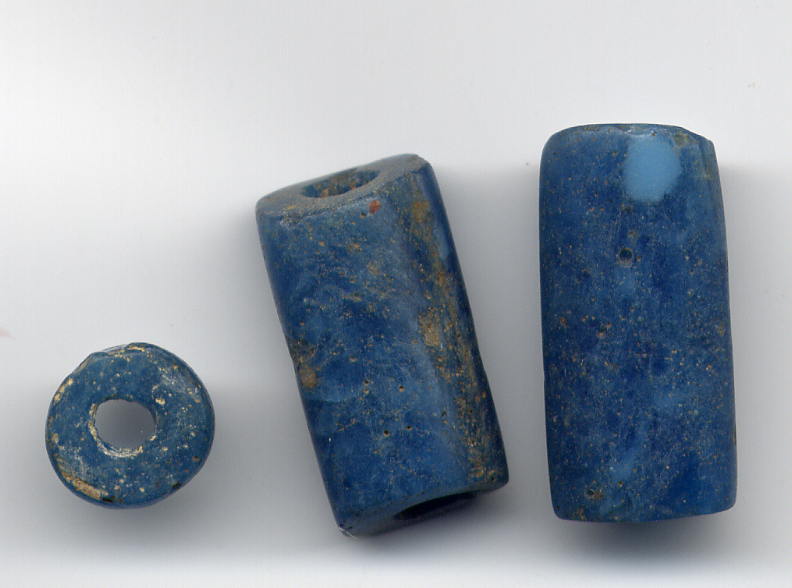Be they pitted antiques, or modern trade bead replicas, I find Recycled glass beads utterly irresistible for jewelry projects. An inherent part of their allure is their rustique charm; no two are ever alike, and they’re often tumbled to make them look far older than they really are. Another thing that fascinates me about these beautiful African glass beads is their history. For despite modern day Ghana producing Recycled glass beads in their thousands, a significant percentage of those sold online predate the 1970s. And they are almost as highly sought after as old African trade beads! Here are just a few of the most collectible.
Awuazi
Awauzi Beads are thought to be one of the earliest types of reproduction trade bead to be produced in Ghana. They are similar to early European wound beads in aesthetics, suggesting they may have been influenced by chunky Dogon Beads traded in Africa during the 19th Century. The earliest surviving examples of Awauzi Beads are believed to date back to the 1920s, and were made with recycled trade beads and cold cream jars. They are almost always opaque, and a light to mid aqua blue in color.
Keta Awuazi
Keta Awuazi are mottled, recycled glass tube beads originating from the coastal town of Keta, Ghana, near the Togo border. Unlike Awuazi Beads, they are more tubular in shape, and generally have a smoother finish. Keta Awuazi are also made from crushed trade beads and cold cream jars, but despite being of a similar age, have a far cleaner finish at each end. These beads are produced in a variety of colors – the most common being light blue.
Niusisi Koli
Niusisi Koli are typically cloudier in appearance compared to Keta Awuazi, and are often speckled. The word “niusisi” is Krobo for “underwater” – perhaps in reference to the translucent green and blue hues of the tubular beads. Niusisi Koli are often compared Yoruban “ateyun” beads, however the former were often produced in a greater variety of colors.

